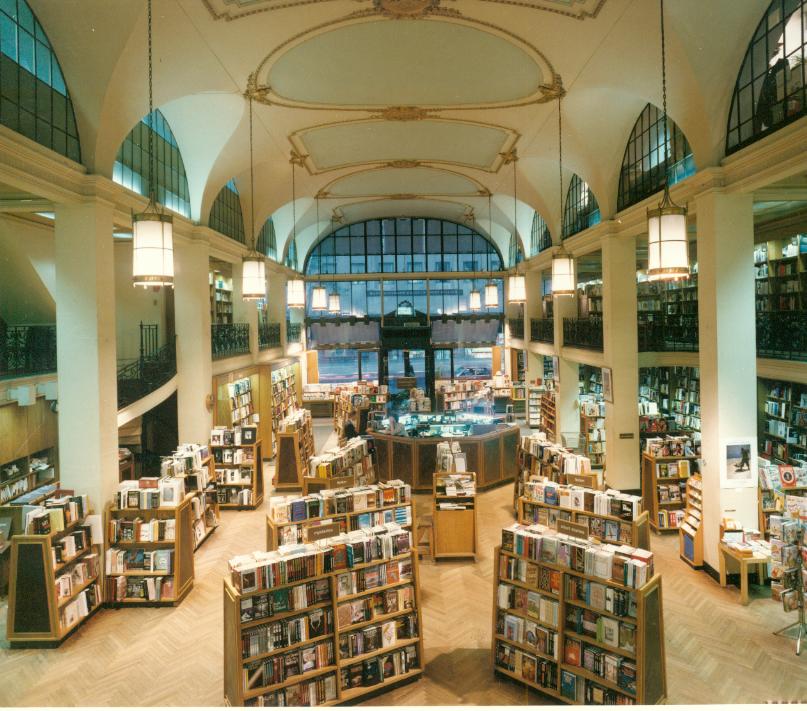Over the past few weeks, having finished “Just Kids” and having Daniel Kelly and Tara Sabharwal, practicing artists, in our classroom, I realized that a common theme to all artist’s lives is that of struggle. Artists, initially at least, struggle to have a solid financial foundation. In their passion to practice their craft, many artists sacrifice security and luxury for a meager existence, all for their art. Of course, I’m exaggerating a bit, as this is clearly not true of all artists. But there is the question of making their craft pay for their living, as being an artist isn’t a stable source of income, especially if you are young and unknown.
At this point, we’re all pretty familiar with Patti and Robert’s struggles as up and coming artists. They had to work a variety of side jobs in order to make the minimum amount of money they needed to make the rent. Often they ate little and spent money very frugally. Daniel Kelly, when he was speaking to us, made note of the large number of weddings that he had to play at to be financially secure. Tara Sabharwal told us about residencies, which many artists use to have a safe financial backing while they pursue their passion and eventually succeed. There is no denying that an artist’s life is full of struggles, for money and for the freedom to do what they truly want. So why do they pursue it?
Again, drawing from “Just Kids” and our visitors, one can clearly see that, despite their struggles, artists are dedicated and passionate about what they do. Their craft makes them happy. Patti and Robert were dedicated to their art throughout all their struggles and continued to create art during those times. They never gave up on their art to pursue a more stable career. They did what they loved. When Daniel and Tara spoke to us, it was evident that they were truly in love with what they did. It is everyone’s dream to make money doing what they love and artists, I believe, have accomplished this.


 With regards to Just Kids, Hotel Chelsea was the site where Patti Smith had heard that had cheap rooms and that they can pay in art temporarily ahead of time (Smith 93). Inevitably, they got the smallest room in Hotel Chelsea, room 1017, as described by Smith (94-95). At Hotel Chelsea, Patti and Robert met many different people. The first person Robert met was Bruce Rudow, who took him under his wings. Others included hotel manager Stanley Bard, Sandy Daley, of who was describe as “the most influential person we met” (101), Matthew Reich etc. The Hotel Chelsea was a place of art and intellectual hub during this era, where famous people such as Bob Dylan, Janis Joplin, Jimi Hendrix had stayed. A lot happened there.
With regards to Just Kids, Hotel Chelsea was the site where Patti Smith had heard that had cheap rooms and that they can pay in art temporarily ahead of time (Smith 93). Inevitably, they got the smallest room in Hotel Chelsea, room 1017, as described by Smith (94-95). At Hotel Chelsea, Patti and Robert met many different people. The first person Robert met was Bruce Rudow, who took him under his wings. Others included hotel manager Stanley Bard, Sandy Daley, of who was describe as “the most influential person we met” (101), Matthew Reich etc. The Hotel Chelsea was a place of art and intellectual hub during this era, where famous people such as Bob Dylan, Janis Joplin, Jimi Hendrix had stayed. A lot happened there.


 an expensive Buddha. The job was referred from Janet Hamill, a friend she met from college. Smith described her job as a “dream job, working in the retail store of the prestigious publisher, home to writers like Hemingway and Fitzgerald, and their editor, the great Maxwell Perkins.” (Smith 55). Smith also felt very lucky to be working at “such a historic bookstore”, with a higher salary and being able to work with Janet (Smith 55). The bookstore announced its closure in 1988, and officially closed in 1989, ending the 76 years of business. Today, it is currently a Sephora cosmetics store, with the name of the building, “Charles Scribner’s Sons”, still written on the building itself.
an expensive Buddha. The job was referred from Janet Hamill, a friend she met from college. Smith described her job as a “dream job, working in the retail store of the prestigious publisher, home to writers like Hemingway and Fitzgerald, and their editor, the great Maxwell Perkins.” (Smith 55). Smith also felt very lucky to be working at “such a historic bookstore”, with a higher salary and being able to work with Janet (Smith 55). The bookstore announced its closure in 1988, and officially closed in 1989, ending the 76 years of business. Today, it is currently a Sephora cosmetics store, with the name of the building, “Charles Scribner’s Sons”, still written on the building itself.